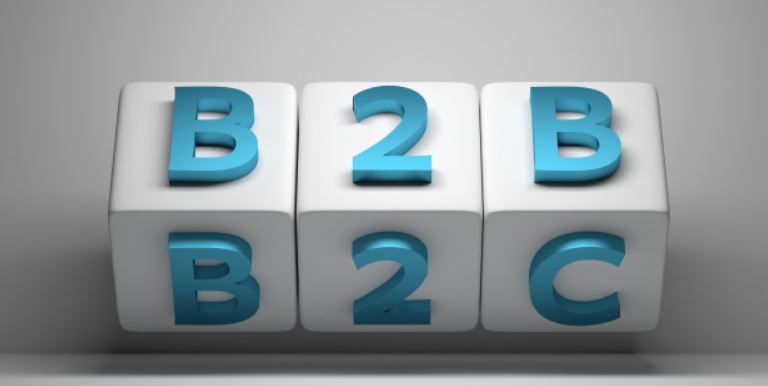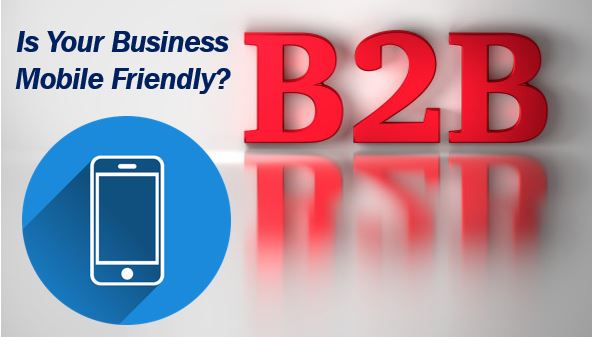A survey of B2B executives in North America finds that 94% acknowledge that eCommerce is critical to business results and competitive advantage. But only 20% of their B2B sales were completed via eCommerce. Despite the demand by B2B buyers, B2B sellers lag in providing the on-line experience that’s expected.

The B2B eCommerce platform of today is more than just a portal for customer orders. It must be a tool for increasing sales, gathering actionable insights, and improving productivity. All without losing sight of offering the buying experience their customers demand.
What is B2B eCommerce and Why Does it Matter?
B2B eCommerce is the sale of goods and services from one company to another using a digital interface. That interface can be a webstore, a punchout catalog, or an EDI (electronic data exchange) transaction.
It matters because that’s exactly how buyers want to do business these days. The B2B buyer in today’s market was raised on the internet and is at home with digital technology. New purchases start with a hunt for a solution and these younger buyers begin their search on the internet. They’ve been buying personal items on the web through their PC, smartphone, or smart speaker and they expect the same experience when they start a purchase for work.
While they are searching, they don’t have time for outdated interfaces and they have no patience for slow loading times. They want to find what they need, place their order, and make a payment just as easily on their mobile devices as they do on their desktop.
A B2B eCommerce platform is what empowers your business to take advantage of digital selling opportunities of all stripes. eCommerce will continue to grow as a key channel for acquiring new customers and increasing sales. In this post, we’ll take a look at how your platform can drive your digital transformation as well as the most important features to look for when comparing B2B eCommerce platforms.
Popular B2B eCommerce platform features
If you want to get the most from your eCommerce channel and offer a great experience to your customers, your B2B eCommerce platform must provide the tools for success. It works and plays well with your existing architecture while providing a secure environment in which to engage with your customers. It should serve up your website on all devices and provide each shopper the customized experience they desire. On the back-end, the admin panel is intuitive, flexible, and makes gathering and analyzing data easy. Bonus points for integrated CRM and marketing support. It should provide the features you need to simplify complex purchasing transactions and make life easier for you and your customers. Sound pie-in-the-sky? Not really. These solutions are out there and here is what to look for when considering B2B eCommerce solutions:
-
Completely Mobile Friendly

Your customer should have the same high-quality experience on their mobile devices that they encounter on desk-tops. In addition to rendering perfectly, the menus, buttons, and input fields should be intuitive. Multimedia should stream smoothly. Remember, your customers aren’t the only ones using the platform. Your field sales reps and admins want a mobile-ready back end as well.
-
Easy to Configure SKUs
Like most B2B sellers, you probably offer the same SKU in a variety of sizes and configurations. Look for a pricing engine that can handle multiple variants and assures RFQs are always priced correctly. Handle sale by the each as easily as bulk orders with easily configurable products.
-
Customization
Improving the customer journey begins with recognizing the individuality of the customer. Respect your customer’s time. Don’t make them search endlessly for the products they purchase on a regular basis. Offer custom catalogs and price lists each time they log in. Every product they view should including their unique pricing and reflect their preferred delivery options.
The right B2B eCommerce platform features an easy way to manage endless product catalogs and display the right product data to the right customer. In addition, it should include functionality to segment customers by the market to create personalized offers and promotions.
You want an eCommerce platform you can use for seamless communication and personalized digital marketing. For instance, cold calling can help you market your B2B products and services more effectively. According to this how to guide, if you have a great B2B eCommerce platform, you’ll be able to carry out cold calling scripts to attract more clients without being too pushy.
-
Self-service Model
Once upon a time if a customer had a problem or question, they would pick up the phone and give you a call. Not anymore.
Today, customers tend to look first for a self-serve solution. With 73% first turning to the web, your B2B eCommerce platform must provide extensive tools for self-service. This can mean anything from downloadable product manuals and user guides to chatbots, videos, and extensive product information. By simply logging in, any customer should be able to access an order history, check the status of their order and tracking, and even download a copy of the sales order or invoice. Human assets should focus on what humans do best and leave the routine inquiries to the website.
One self-service option is having intuitive self-help features. Your eCommerce platform should have a bulk ordering feature so they can place big orders without contacting a sales agent, saving them much time and effort.
-
User based roles and permissions
Unlike B2C sales where one buyer is involved, B2B sales usually involve multiple decision-makers with different levels of authority. Instead of impulse buys, B2B transactions have long purchase cycles. Your B2B eCommerce software should allow your customers to set user roles and permission that reflect their internal hierarchy. Corporate buyers appreciate the flexibility to define their own user roles for quoting, ordering, and checkout workflows.
-
Scalability and Flexibility for Growth and Change
What works for your company today may not be the best solution in 2 years. Look for a B2B eCommerce platform that future-proofs your company. It should grow and scale to support your ambitions. That is why it is not a good idea to repurpose a B2C solution for B2B. Unlimited SKUs and customers with no loss of performance. Look for deploy anywhere flexibility. This means you can deploy on-premise, on the web, or even on the Cloud.
As your needs change, it should be easy to change your deployment. In addition, today you may be a pure B2B seller, but tomorrow you may decide to sell direct. Look for a platform that flexes with your business model to support B2B, B2C, B2B2C, and even marketplaces.
-
Supports Multiple Payment Options
Each contract may include individually negotiated payment terms. Your B2B eCommerce platform should support the widest variety of payment options possible. From PayPal to credit card processing for due at purchase terms to support for APIs that let you assess credit risk and extend terms in the blink of an eye. Customers that have more payment options are the customers that will purchase more.
-
Integrations and Ecosystem
Your eCommerce platform won’t be operated as a stand-alone solution. So, when evaluating your options, investigate the ease of integration with your ERP, PIM or CRM system. Data should flow freely throughout your architecture. You never want to re-invent the wheel, so look at the number of plugins, extensions, and APIs available.
The level of corporate support and the user and developer community are important as well. Finally, see how many integration consultants are available to assist you with your digital transformation. To create a truly omnichannel customer experience, you won’t be going it alone.
A B2B eCommerce platform aids digital transformation
Digital transformations are about changing corporate culture and technology to place the customer at the center of all you do. That’s because in the digital age, customer expectations and buying preferences are constantly evolving and technology is your only hope for staying ahead.
You may have a great set eCommerce tools today, but without a digital transformation strategy you will soon have a spaghetti bowl of entwined and mismatched solutions that hamper your growth and ambitions. Here’s how to avoid that trap:
Focus on Customer Experiences
Digital transformations at their heart are about improving the customer experience. That’s because when you deliver a customer experience that meets or exceed expectations you earn customer loyalty. That means more sales. Give fast site loading times, customized products, frictionless checkout, multiple options, and automated order tracking. Pick a B2B eCommerce platform that conforms to the way you do business, not a solution than requires you to change how you do business.
Develop Your Own vs License Theirs
You can create your own solution from the ground up or license an existing solution. This really shouldn’t be a very hard decision. What business are you in? If you aren’t in the software development business, it probably makes sense to license an out-of-the-box solution. Whether you go with open-source or proprietary code, you are relying on developers to know their business as well as you know yours.
Building your own B2B eCommerce platform is not for the faint-hearted and will require extensive resources. Better to carefully vet B2B eCommerce platforms and select the one that best meets your needs.
Carefully Plan Your Implementation
You should carefully plan the implementation of your digital transformation strategy. Make sure you plan includes allocation of human resources, sets key performance indicators to measure progress, and keeps lines of communication open. A team approach with internal members and external, technical partners and consultants may ensure your implementation stays on track and achieves maximum results.
Here are the best practices when implementing a B2B eCommerce solution:
- Holistic Approach: The eCommerce platform you use impacts buyer experience. The business market expects a high level of convenience and efficiency when completing an online transaction. For a holistic approach, focus on creating great personalized content, speed, and search engine optimization (SEO).
- Streamlined Checkout Flow: Provide flexible shipping and payment options. Since clients are repeat customers, your B2B eCommerce platform should be capable of pre-filling orders for a more efficient sales process.
Create Unique Buying Experience: Customize a buyer’s experience to open a branding opportunity. Make sure the purchase flows seamlessly, showing your commitment to improving the process.
Conclusion
While you may start with a brainstorming session to identify all that is possible, you will begin to slowly narrow down the key features your B2B eCommerce platform must include. As you identify these features, see how they fit with the existing processes and architecture. Keep everyone involved in the project in the loop.
Celebrate milestones to keep morale and project buy-in high. Don’t forget that any change can be scary to employees and customers. But when you select the best B2B eCommerce platform, it will be a change for the better.
Interesting related article: “What is B2B?”

